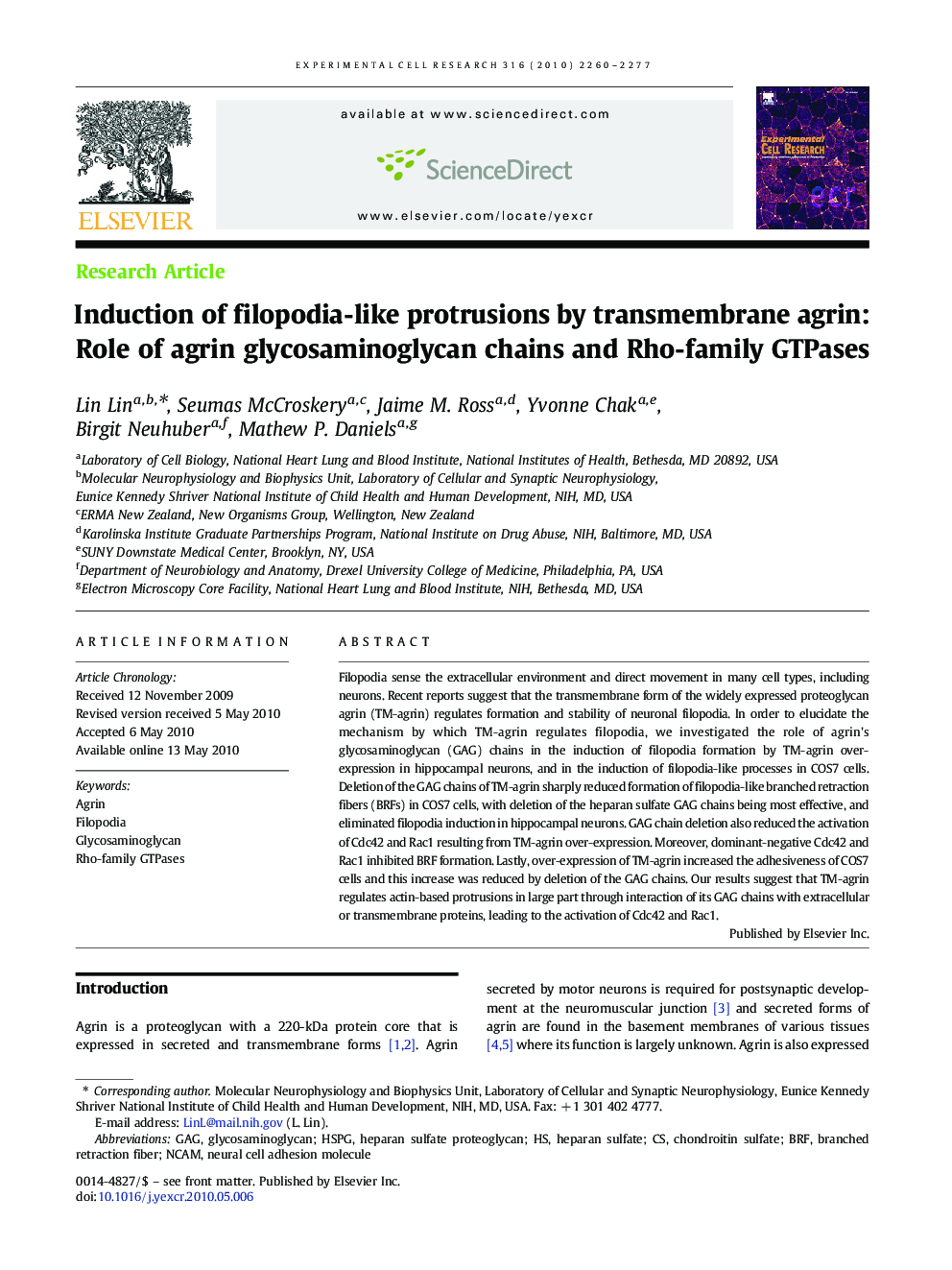| کد مقاله | کد نشریه | سال انتشار | مقاله انگلیسی | نسخه تمام متن |
|---|---|---|---|---|
| 2130903 | 1086610 | 2010 | 18 صفحه PDF | دانلود رایگان |

Filopodia sense the extracellular environment and direct movement in many cell types, including neurons. Recent reports suggest that the transmembrane form of the widely expressed proteoglycan agrin (TM-agrin) regulates formation and stability of neuronal filopodia. In order to elucidate the mechanism by which TM-agrin regulates filopodia, we investigated the role of agrin's glycosaminoglycan (GAG) chains in the induction of filopodia formation by TM-agrin over-expression in hippocampal neurons, and in the induction of filopodia-like processes in COS7 cells. Deletion of the GAG chains of TM-agrin sharply reduced formation of filopodia-like branched retraction fibers (BRFs) in COS7 cells, with deletion of the heparan sulfate GAG chains being most effective, and eliminated filopodia induction in hippocampal neurons. GAG chain deletion also reduced the activation of Cdc42 and Rac1 resulting from TM-agrin over-expression. Moreover, dominant-negative Cdc42 and Rac1 inhibited BRF formation. Lastly, over-expression of TM-agrin increased the adhesiveness of COS7 cells and this increase was reduced by deletion of the GAG chains. Our results suggest that TM-agrin regulates actin-based protrusions in large part through interaction of its GAG chains with extracellular or transmembrane proteins, leading to the activation of Cdc42 and Rac1.
Journal: Experimental Cell Research - Volume 316, Issue 14, 15 August 2010, Pages 2260–2277